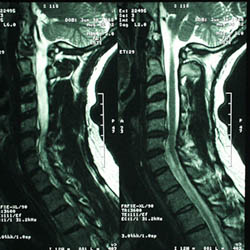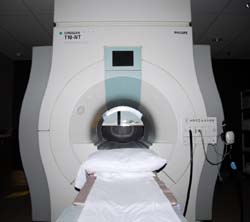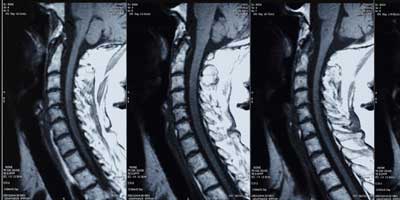Locations

Fax: (303) 762-9292

Understanding Medical Tests: MRI (Magnetic Resonance Imaging)
MRI, or Magnetic Resonance Imaging, is an important diagnostic tool used to help identify spinal problems such as nerve impingement, disc herniation, spinal cord compression, fracture, tumor, or infection.
What is MRI?
MRI is the imaging gold standard. MRI combines computer technology, a magnetic field, and radio wave pulse energy to produce two-dimension images and three-dimensional models of the spine. This process is radiation-free and the radio waves are harmless.
 MRI of the Cervical Spine
MRI of the Cervical Spine
Unlike CT scans and x-ray images, MRI scans produce highly detailed images that best capture the anatomical characteristics of many soft tissue problems. In addition, MRI can create images in different anatomical planes, enabling study of the spine from different angles.
| Anatomical Plane | Description |
|---|---|
| Coronal Plane (Frontal Plane) | Separates the body vertically from head to toe and front and back. |
| Sagittal Plane (Lateral Plane) | Separates the body vertically from head to toe and left and right sides. |
| Axial Plane (Transverse Plane) | Separates the body horizontally at the waist, i.e. top and bottom halves of the body. |
MRI Equipment
You are positioned on a padded and motorized table that slides in and out of the MRI tube or scanning area. You may be gently strapped or secured in place to help prevent unintentional movement, which may distort imaging. Newer MRI machines are open at the sides and of great benefit to claustrophobic patients.
The operation of the MRI equipment is performed in a room adjacent to the patient to protect the computers from powerful magnetic forces. However, during the test, the technician can see and communicate with you.

Who Should Not Undergo MRI
If you have a pacemaker, aneurysm clips, metallic orthopaedic or dental implants (including some stainless steel spinal implants), are physically too large, or pregnant, be sure to tell your doctor or radiological technician.
Pre-test Preparation
No special physical preparation is necessary. It is not necessary to restrict food or fluids prior to the test, unless a contrast media (dye) will be injected. You will receive special pre-test instructions if a contrast agent will be used.
It is best to leave jewelry and other valuables at home. You will be asked to remove metal objects (i.e. belt buckle) and wear a medical gown.
During the Procedure
MRI machines make a significant amount of noise. You may be offered headphones and music to listen to during the test. During the test, you must remain as still as possible. The length of the test varies from 30-minutes to an hour.
Conclusion
An MRI can be an important step in the diagnosis of your spinal condition. Our technicians are skilled and caring people with a desire to make your exam as successful and as comfortable as possible. Our medical staff is pleased to answer any questions you have prior to your MRI.








